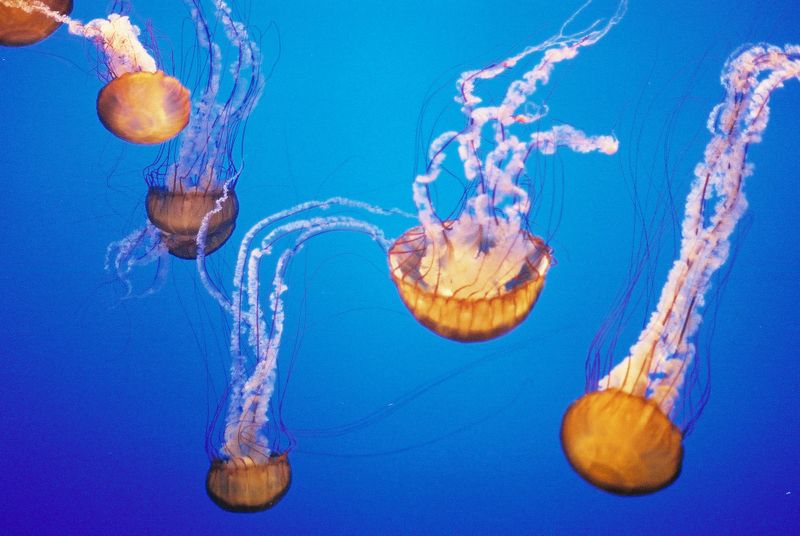
Photo credit: Hodgers
Starfish are now known as sea stars and jellyfish are now known as sea jellies. Sometimes jellyfish are referred to as just jellies, but I prefer sea jellies, this name better orients the mind.
Why the switch? Jellyfish aren’t fish, making the name sea jellies more accurate, but the new term is having a tougher time catching on compared to sea star. So for the purposes of this blog I will be using both names to avoid confusion and also help people transition.
Sea jellies are members of the phylum Cnidaria (the C is silent) and also members of the subphylum Medusozoa. Their bodies are made up of mesoglea, a jelly-like material. According to Jellyfishfacts.com a “jellyfish has two layers of skin – epidermis or the outer layer and gastrodermis or the gut lining. A layer of thick gelatinous substance called mesoglea fills the portion between these two skin layers.” Mesoglea gives sea jellies much of their substance, which isn’t much considering they are 95% water.
Mesoglea is another great science name that actually makes sense. Thefreedictionary.com explains that meso is Greek for middle and glea derives from the ancient Greek work gloia meaning glue. And that’s exactly what mesoglea is, the glue holding together a sea jelly’s middle layer.
I don’t know if I’m willing to make the switch….a lifetime of calling them jellyfish! But I would never have known there was a site called jellyfishfacts.com if I hadn’t read this, so the day has meaning. And jellies have no brains! (The dumb mobster in “Analyze This” was named Jelly. Go figure.)
I learned this some years back and I haven’t used “star fish or jelly fish” since. It makes me want to bang my head agianst a cement wall when people use the wrong term!
I remember this back when I took an oceanography class in high school. The teacher kept refering to jellyfish as sea jellies. I stopped her and asked why she called them this. She said they are not technically fish so sea jelly is more appropriate. I said in response well they aren’t technically jelly either. The class began to chuckle and I was in trouble.
This was back in the day before I learned to shut my mouth…
Steve, I think you made an excellent point. Too bad teachers don’t always appreciate a good sense of humor!
Adding the word fish implies gills. Jellies do not have gills. You are right, they are not jelly, but do look like jelly in the water but they definitely do not look like fish and they’re not.
Sea jellies doesn’t scan as smoothly as jellyfish…just like sabre-tooth tigers have been corrected to sabre-tooth cats the PC brigade are obsessed with literal meaning. Words transcend literality.
I never call them “saber-tooth tigers” or “saber-tooth-cats”. I like to differentiate the species, so I often say Smilodon (the one most commonly pictured), or homotherium, dinofelis, xenosmilus, megantereon, or any of the barbourofelids, oxyaenids, thylacosmilids or nimravids that share the eponymous trait. But that’s cause I know a lot on the subject. but yes, I agree sea-jelly doesn’t translate as well as sea-star, and jellyfish is easier. I get the desire in changing the names, but nobody is changing “cuttlefish”. Probably cause nobody messes with the cuttlefish, they are the best.
I learned this some years back and I haven’t used “star fish or jelly fish” since. Those aren’t even the first thing that come to mind anymore. It makes me want to bang my head agianst a cement wall when people use the wrong term!
I agree, but sometimes I still catch myself using jellyfish!